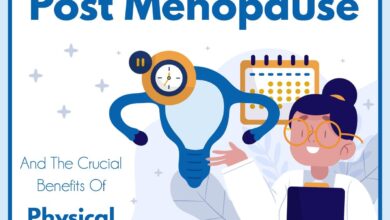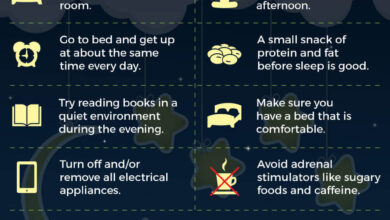
Why Are Women More Prone to Pain?
Why are women more prone to pain? It’s a question that’s puzzled scientists and medical professionals for years. The answer, it turns out, isn’t simple, and involves a complex interplay of biological, societal, psychological, and even genetic factors. This exploration delves into the multifaceted reasons behind the disparity in pain experience between genders, examining everything from hormonal fluctuations to cultural expectations and the biases inherent in healthcare systems.
We’ll investigate the roles of hormones like estrogen and progesterone, exploring how they influence pain sensitivity and pathways. We’ll also examine how societal pressures and gender roles affect women’s reporting of pain, often leading to underdiagnosis and inadequate treatment. Finally, we’ll discuss the prevalence of specific pain conditions that disproportionately affect women, such as fibromyalgia and endometriosis, and explore effective pain management strategies tailored to their unique needs.
Biological Factors Contributing to Pain Perception in Women

Source: ytimg.com
The experience of pain is complex and influenced by a multitude of factors, and while both men and women experience pain, there are significant biological differences that contribute to variations in pain perception and response. These differences are rooted in hormonal fluctuations, the unique anatomy of the female reproductive system, and potential variations in nervous system structure and genetics.
Hormonal Influence on Pain Sensitivity
Estrogen and progesterone, the primary female sex hormones, play a crucial role in modulating pain sensitivity throughout a woman’s lifespan. Estrogen levels fluctuate significantly throughout the menstrual cycle, pregnancy, and menopause, impacting pain pathways and influencing the perception of various types of pain. High estrogen levels have been associated with increased pain sensitivity in some studies, while low estrogen levels, as seen during menopause, can also lead to heightened pain perception in conditions like osteoarthritis.
Progesterone, on the other hand, generally has analgesic (pain-relieving) effects, but its impact on pain can vary depending on other factors and individual variations. The complex interplay between these hormones and other neurochemicals makes understanding the exact mechanisms a continuing area of research.
The Female Reproductive System and Pain Pathways
The female reproductive system’s unique anatomy and physiology contribute significantly to pain experiences. The menstrual cycle itself is associated with cyclical pain, ranging from mild discomfort to severe dysmenorrhea. Pain associated with endometriosis, a condition where uterine tissue grows outside the uterus, and conditions like ovarian cysts, can be debilitating. The neural pathways connecting the reproductive organs to the central nervous system are complex and interwoven with other pain pathways, leading to the potential for referred pain or amplified pain sensations.
The intricate relationship between the reproductive system and the nervous system underlines the importance of considering this anatomical context when assessing and managing pain in women.
Nervous System Differences and Pain Processing
While the fundamental structure of the nervous system is similar between men and women, subtle differences in the function and organization of specific brain regions involved in pain processing may exist. Some research suggests that women may have a greater density of certain types of nerve fibers involved in pain transmission, potentially contributing to heightened pain sensitivity. Furthermore, differences in the activity of neurotransmitters and neuromodulators within the central nervous system may also influence pain perception and response between the sexes.
So many factors contribute to why women often report experiencing pain more intensely than men, hormonal fluctuations being a major one. It’s fascinating to consider this in the context of age-related conditions, especially since early detection is key. For instance, research suggests that a simple eye test, as discussed in this article can eye test detect dementia risk in older adults , could be a game-changer.
Understanding these connections highlights the importance of comprehensive healthcare, particularly for women navigating the complexities of aging and pain management.
These differences are subtle and complex, requiring further investigation to fully understand their implications for pain management.
Genetic Variations and Pain Experience
Genetic variations can significantly influence an individual’s pain experience, and this is no less true for women. Specific genes involved in pain pathways, opioid receptor function, and inflammatory responses can have different expression patterns or variations between individuals. These genetic variations can influence the individual’s threshold for pain, the intensity of pain perception, and the effectiveness of pain-relieving treatments.
Research into these genetic factors is ongoing, aiming to identify specific genes that contribute to sex-based differences in pain.
Comparative Pain Responses to Common Stimuli, Why are women more prone to pain
The following table provides a simplified comparison of pain responses to common stimuli in men and women. It’s crucial to remember that these are general trends and individual variability is significant.
| Stimulus | Men (Average Response) | Women (Average Response) | Notes |
|---|---|---|---|
| Heat | Moderate | Higher | Women tend to report higher sensitivity to heat pain. |
| Pressure | Moderate | Moderate to High | Variations exist, with some studies showing increased pressure pain sensitivity in women. |
| Cold | Moderate | Higher | Similar to heat, women often report greater sensitivity to cold. |
| Visceral Pain (e.g., menstrual cramps) | Not Applicable | Variable, often high | Specific to women due to the reproductive system. |
Societal and Cultural Influences on Pain Reporting

Source: twimg.com
Societal expectations and cultural norms significantly shape how women experience and report pain. These influences often intersect with biological factors, creating a complex interplay that impacts diagnosis, treatment, and overall health outcomes. Understanding these societal and cultural dimensions is crucial for improving pain management for women.Societal expectations and gender roles significantly influence women’s pain reporting. Women are often socialized to be more nurturing and less assertive, leading them to downplay their pain to avoid appearing weak or demanding.
This can result in delayed or inadequate treatment, as healthcare providers may not receive a complete picture of the patient’s experience. The pressure to maintain a strong and capable persona, particularly in the face of societal expectations of motherhood and domestic roles, can further exacerbate this underreporting.
So, why are women more prone to experiencing chronic pain? Hormonal fluctuations are a big part of it, but it’s also about how our bodies react to injury and inflammation. Think about organ transplantation – the complexities involved highlight how intricate our systems are. The recent news that the FDA approved clinical trials for pig kidney transplants in humans, as reported here: fda approves clinical trials for pig kidney transplants in humans , underscores the need for further research into pain management, especially considering the unique physiological differences between sexes.
Understanding these differences is crucial for developing more effective treatments for all patients.
Underreporting of Pain Due to Societal Pressures
The pressure to conform to traditional gender roles can lead women to minimize their pain experiences. For example, a working mother might suppress pain symptoms to avoid taking time off work or burdening her family. Similarly, a woman might hesitate to report chronic pain, fearing it will be perceived as a sign of weakness or inadequacy, thus impacting her relationships or professional standing.
This self-silencing prevents them from seeking the necessary medical attention and appropriate pain management strategies. The consequences can range from delayed diagnosis and treatment of serious conditions to increased suffering and diminished quality of life.
Cultural Norms Affecting Pain Perception and Treatment
Cultural beliefs and practices significantly influence how pain is perceived and treated in women. Some cultures may stigmatize chronic pain, leading to feelings of shame and reluctance to seek help. Other cultures may emphasize stoicism and resilience, encouraging women to endure pain without complaint. These cultural norms can result in women delaying or avoiding medical care, leading to more severe health problems.
For instance, in some cultures, women’s pain might be attributed to psychological factors rather than physical causes, resulting in inadequate or inappropriate treatment. Conversely, in other cultures, open expression of pain might be encouraged, but the available treatment options might be limited due to lack of resources or access to healthcare.
Healthcare System Biases in Pain Management for Women
Biases within healthcare systems can contribute to inadequate pain management for women. Providers may be more likely to attribute women’s pain to psychological factors, overlooking or underestimating the severity of physical ailments. This bias can lead to insufficient pain assessment, inadequate treatment plans, and dismissal of women’s pain complaints. The use of pain scales may also inadvertently perpetuate bias, as they may not adequately capture the diverse and complex experiences of women’s pain.
Furthermore, differences in pain expression between men and women may be misinterpreted, leading to misdiagnosis or delayed treatment.
Hypothetical Scenario Illustrating Societal Influence on Pain Management
Imagine Sarah, a 35-year-old single mother working two jobs to support her family. She experiences persistent back pain but avoids seeking medical attention due to fear of missing work and the financial implications of treatment. Her cultural background emphasizes stoicism, and she believes she should be able to manage her pain without complaint. When she finally does seek help, her doctor, unconsciously influenced by gender stereotypes, initially attributes her pain to stress and anxiety, prescribing only mild analgesics without conducting a thorough physical examination.
This scenario highlights how societal pressures, cultural norms, and healthcare biases can interact to create significant barriers to effective pain management for women. The delayed diagnosis and inadequate treatment ultimately exacerbate Sarah’s pain and impact her overall well-being.
Psychological Factors and Pain Experience: Why Are Women More Prone To Pain
The experience of pain is far from a purely physiological process; it’s deeply intertwined with our psychological state. Factors like stress, anxiety, and pre-existing mental health conditions can significantly influence how we perceive and react to pain, often exacerbating the intensity and duration of suffering, particularly in women. Understanding these psychological components is crucial for developing effective pain management strategies.
Stress and Anxiety’s Amplification of Pain Perception in Women
Stress and anxiety act as powerful amplifiers of pain signals. When we’re stressed, our bodies release hormones like cortisol, which can alter pain pathways in the brain, making us more sensitive to discomfort. Chronic stress, a common experience for many women juggling work, family, and other responsibilities, can lead to a persistent state of heightened pain sensitivity. Anxiety, with its focus on worry and fear, can further intensify this effect, creating a vicious cycle where anxiety increases pain, which in turn fuels more anxiety.
This is particularly relevant in conditions like fibromyalgia, where stress and anxiety are often identified as key triggers for pain flares.
Impact of Mental Health Conditions on Pain Sensitivity
The relationship between mental health conditions and pain is complex and bidirectional. Conditions like depression and anxiety are frequently co-morbid with chronic pain, meaning they often occur together. Depression can lower pain thresholds, making individuals more sensitive to even mild stimuli. Anxiety, as mentioned earlier, directly impacts pain processing in the brain. Furthermore, the emotional distress associated with these conditions can lead to increased pain catastrophizing – a tendency to magnify the threat of pain, focusing on its negative aspects and expecting the worst.
This catastrophizing can significantly worsen the overall pain experience.
Coping Mechanisms for Pain Management in Men and Women
While individual coping strategies vary widely, research suggests some gender-based differences in pain management approaches. Men may be more likely to employ distraction techniques or problem-solving strategies, focusing on external solutions to alleviate pain. Women, on the other hand, may utilize emotion-focused coping mechanisms more frequently, such as seeking social support or engaging in self-soothing behaviors. These differences are likely influenced by societal expectations and gender roles, which can shape how men and women are encouraged to express and manage their emotions, including pain.
Examples of Psychological Interventions Effective in Managing Pain in Women
Several psychological interventions have proven effective in managing chronic pain in women. Cognitive Behavioral Therapy (CBT) helps individuals identify and modify negative thought patterns and behaviors that contribute to pain amplification. Mindfulness-based stress reduction (MBSR) teaches techniques to cultivate present moment awareness and reduce stress, thereby mitigating pain sensitivity. Acceptance and Commitment Therapy (ACT) focuses on accepting difficult emotions and committing to valued actions, helping individuals cope with chronic pain without letting it dictate their lives.
These therapies can be delivered individually or in group settings, tailoring approaches to meet individual needs.
Resources for Women Seeking Psychological Support for Pain Management
Finding the right support is crucial for managing chronic pain. Here are some resources:
- National Institute of Mental Health (NIMH): Offers information and resources on mental health conditions and treatment options.
- The American Psychological Association (APA): Provides a directory of psychologists and information on various psychological therapies.
- National Alliance on Mental Illness (NAMI): Offers support groups and educational materials for individuals and families affected by mental illness.
- Chronic Pain Support Groups: Many local communities offer support groups specifically for individuals managing chronic pain, providing a safe space to share experiences and connect with others.
- Your Primary Care Physician: Your doctor can provide referrals to mental health professionals and other pain management specialists.
Specific Pain Conditions More Prevalent in Women
It’s a well-established fact that women experience a disproportionately higher burden of certain chronic pain conditions compared to men. This disparity isn’t simply due to reporting differences; underlying biological, hormonal, and societal factors play significant roles. Let’s delve into some of the most prevalent examples.
Fibromyalgia in Women
Fibromyalgia is a chronic widespread pain disorder characterized by widespread musculoskeletal pain accompanied by fatigue, sleep, memory, and mood issues. While it can affect men, it’s estimated that women are 7 to 10 times more likely to be diagnosed. The exact cause remains unknown, but research suggests a combination of genetic predisposition, environmental factors, and central nervous system sensitization may contribute to its development.
The pain experienced is often described as a deep, aching, burning, or stabbing sensation that can fluctuate in intensity. Diagnosis relies on a combination of physical examination and symptom assessment, as there are no specific diagnostic tests. Treatment typically involves a multi-modal approach, including pain management medications, physical therapy, cognitive behavioral therapy, and lifestyle modifications.
Endometriosis and its Connection to Chronic Pain
Endometriosis is a condition where tissue similar to the lining of the uterus grows outside of the uterus. This misplaced tissue responds to hormonal changes, leading to inflammation, bleeding, and the formation of scar tissue. The chronic pelvic pain associated with endometriosis is often debilitating and can significantly impact a woman’s quality of life. The pathophysiology is complex and not fully understood, but it’s believed that retrograde menstruation (menstrual blood flowing back through the fallopian tubes) plays a role.
The ectopic endometrial tissue can adhere to organs like the ovaries, fallopian tubes, and bowel, causing inflammation and pain. Severe cases can lead to infertility and other complications. Treatment options range from pain management medications (NSAIDs, hormonal therapies) to surgical removal of endometrial implants.
Migraines in Men and Women
Migraines are severe headaches characterized by throbbing pain, often accompanied by nausea, vomiting, and sensitivity to light and sound. While both men and women experience migraines, women are affected more frequently and experience more severe symptoms. Hormonal fluctuations throughout the menstrual cycle, pregnancy, and menopause are believed to be key contributors to this disparity. Furthermore, women tend to experience migraines for a longer duration and have a higher frequency of attacks.
Treatment approaches are similar for both sexes and may include lifestyle modifications, over-the-counter pain relievers, and prescription medications like triptans or CGRP inhibitors. However, the effectiveness of certain treatments can vary based on individual factors and hormonal status.
Interstitial Cystitis
Interstitial cystitis (IC), also known as bladder pain syndrome, is a chronic condition characterized by pelvic pain and urinary symptoms. Women are far more likely to be diagnosed with IC than men. The exact cause of IC is unknown, but it’s thought to involve inflammation and damage to the bladder lining. Symptoms can include pelvic pain, urinary frequency and urgency, and pain during urination.
Treatment focuses on managing pain and improving bladder function and can include medications, physical therapy, and lifestyle changes.
So many factors contribute to why women often experience pain differently, and more intensely, than men – hormonal fluctuations are a big one. It’s fascinating how such complex biological differences play out, and it makes me wonder about the neurological aspects. Learning about effective management techniques, like those outlined in this helpful article on strategies to manage tourette syndrome in children , highlights how understanding the intricacies of the nervous system is key to effective treatment.
Ultimately, further research into the complexities of pain perception in women is crucial for better healthcare.
Anatomical Structures Involved in Endometriosis and its Impact on Pain
[Image Description: A diagram illustrating the female reproductive system. The uterus is shown centrally, with fallopian tubes extending laterally to the ovaries. Scattered patches of dark red tissue representing ectopic endometrial implants are depicted on the ovaries, fallopian tubes, and the outer surface of the uterus. Arrows indicate the possible pathways of retrograde menstruation, showing menstrual blood flowing back through the fallopian tubes.
The diagram also highlights the proximity of these implants to nerves and other pelvic structures, illustrating how inflammation and tissue damage can lead to chronic pain. The overall visual emphasizes the abnormal location of endometrial tissue and its potential to cause inflammation and pain through its interaction with surrounding organs and nerves.]
Differences in Pain Management and Treatment
Pain management is a complex field, and the effectiveness of treatments can vary significantly between individuals. While many factors contribute to this variability, sex and gender play a significant role, influencing both pain experience and response to treatment. Understanding these differences is crucial for developing more effective and equitable pain management strategies.
Varied Responses to Pain Medications
Men and women often metabolize medications differently, leading to varied responses to analgesic drugs. For instance, women tend to experience more side effects from opioids than men, potentially due to hormonal influences on drug metabolism and receptor sensitivity. Conversely, some studies suggest that women may require higher doses of certain non-opioid analgesics to achieve the same level of pain relief as men.
These differences highlight the need for personalized pain management approaches that consider individual factors, including sex and gender.
Challenges in Tailoring Pain Management to Women
Developing effective pain management strategies specifically for women presents several challenges. The complex interplay of hormonal fluctuations throughout the menstrual cycle, pregnancy, and menopause significantly impacts pain perception and response to treatment. Additionally, women are more likely to experience certain types of pain, such as fibromyalgia and endometriosis, which require specialized management approaches. Furthermore, the underrepresentation of women in clinical trials for pain medications can lead to inadequate data on the efficacy and safety of these drugs in women, further hindering the development of targeted therapies.
Potential Gender Biases in Pain Medication Prescribing
Research suggests a potential for gender bias in pain management, with women often facing undertreatment of their pain compared to men. This bias may stem from several factors, including societal stereotypes about women’s pain complaints being exaggerated or emotionally driven, and healthcare providers holding implicit biases that influence their treatment decisions. This undertreatment can have serious consequences, leading to chronic pain, disability, and reduced quality of life.
Efforts to address this bias require increased awareness among healthcare professionals and the development of evidence-based guidelines that promote equitable pain management for all patients, regardless of gender.
The Role of Alternative and Complementary Therapies
Alternative and complementary therapies (ACTs) such as acupuncture, yoga, massage therapy, and mindfulness-based stress reduction can play a significant role in women’s pain management. These therapies can address various aspects of the pain experience, including the physical, emotional, and psychological components. For example, yoga and tai chi can improve flexibility and reduce muscle tension, while mindfulness techniques can help manage stress and improve coping skills.
However, it’s crucial to note that the effectiveness of ACTs can vary, and it is essential to discuss their use with a healthcare professional to ensure they are safe and appropriate for individual needs. More research is needed to fully understand the effectiveness of ACTs for specific pain conditions in women.
Examples of Successful Women-Centric Pain Management Programs
Several successful pain management programs have incorporated a gender-sensitive approach, acknowledging the unique challenges women face.
- Multidisciplinary programs: These programs often integrate various therapies, including physical therapy, occupational therapy, psychological counseling, and medication management, tailoring treatment plans to individual needs and preferences.
- Hormone-focused approaches: For women experiencing pain related to hormonal fluctuations, programs may incorporate hormone replacement therapy (HRT) or other hormonal interventions, carefully managed to mitigate potential risks.
- Mind-body interventions: Programs emphasizing mindfulness, meditation, yoga, or other mind-body techniques can help women manage the emotional and psychological aspects of chronic pain, enhancing overall well-being and pain coping strategies.
- Peer support groups: Connecting women with others who share similar experiences can provide valuable emotional support, reduce feelings of isolation, and foster a sense of community.
Ending Remarks

Source: squarespace-cdn.com
Understanding why women experience pain differently is crucial for improving healthcare outcomes. By acknowledging the complex interplay of biological, societal, and psychological factors, we can move towards more effective pain management strategies and a more equitable healthcare system for all. This journey into the science and sociology of women’s pain highlights the urgent need for further research, increased awareness, and a fundamental shift in how we approach pain diagnosis and treatment for women.
It’s time to listen, understand, and act to address this critical health disparity.
Frequently Asked Questions
What are some common misconceptions about women and pain?
A common misconception is that women are simply more sensitive to pain. This ignores the complex biological and societal factors at play. Another is that women exaggerate or overreport their pain. This dismisses the validity of their experiences and contributes to inadequate treatment.
Can stress worsen pain in women?
Absolutely. Stress and anxiety significantly amplify pain perception in women, further complicating diagnosis and treatment. Managing stress is a crucial component of effective pain management.
Are there specific pain medications more effective for women?
Research is ongoing, but some studies suggest certain medications may be more or less effective depending on hormonal factors. Tailoring treatment to individual needs, considering hormonal cycles, is crucial for optimal results.
Where can women find support for managing chronic pain?
Support groups, therapists specializing in pain management, and pain clinics offer valuable resources and strategies for coping with chronic pain. Your doctor can provide referrals and guidance.




